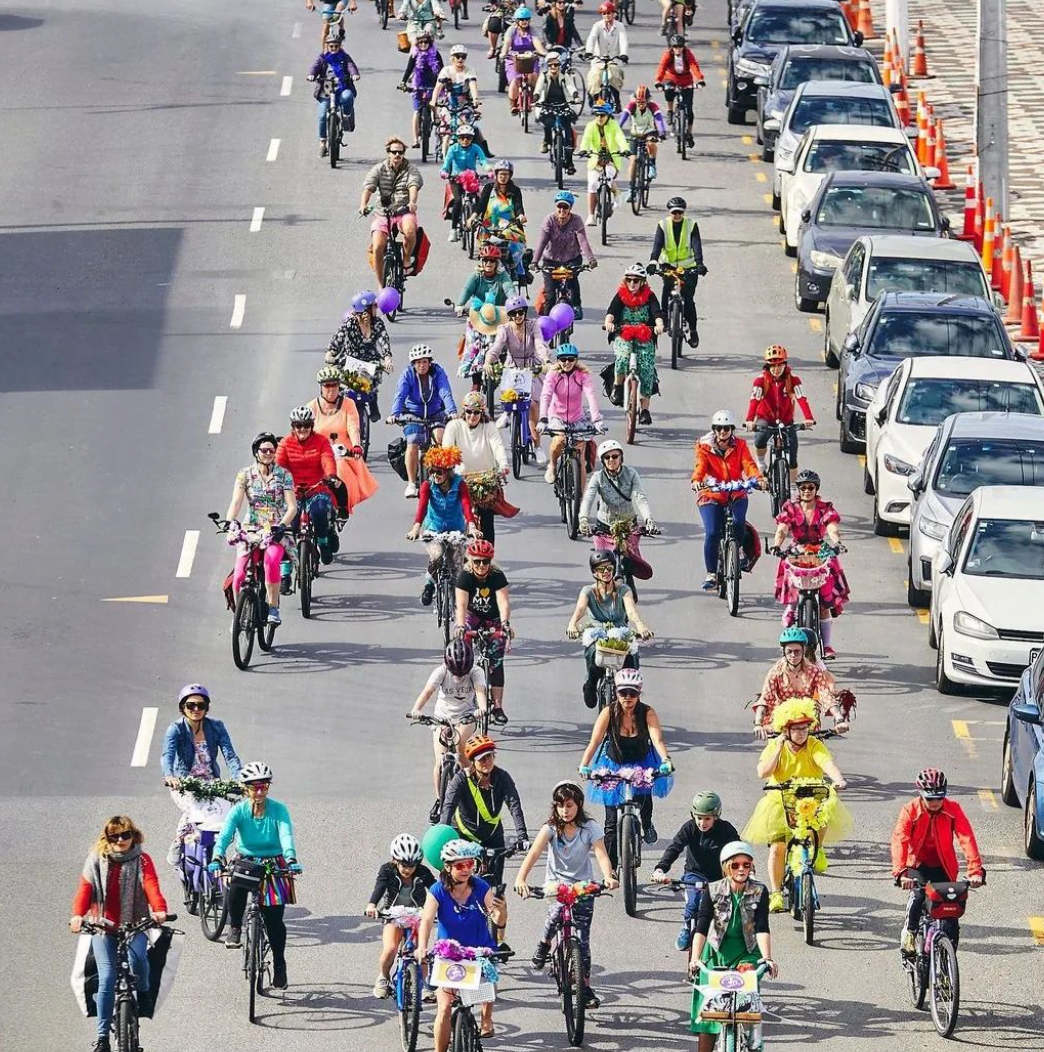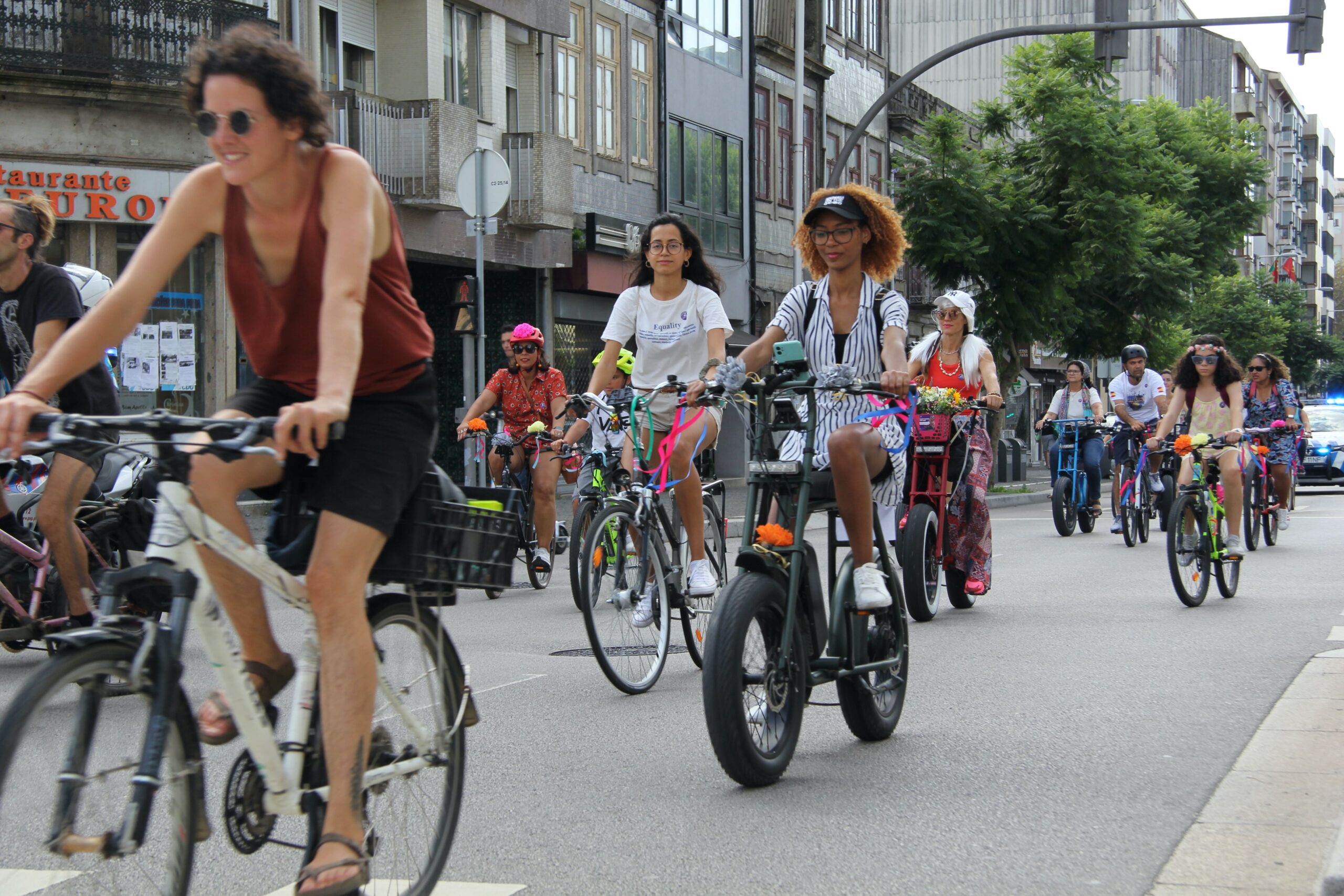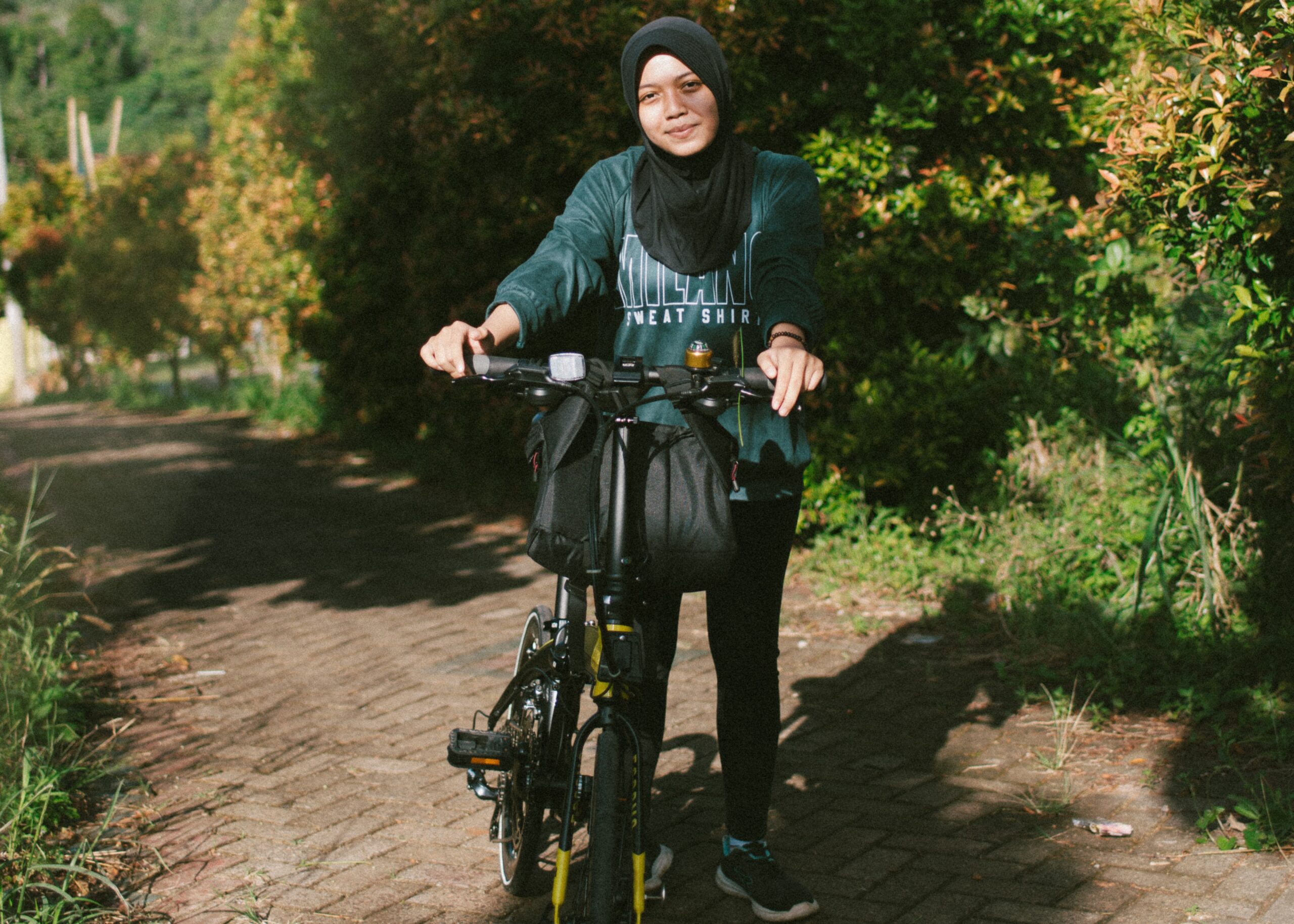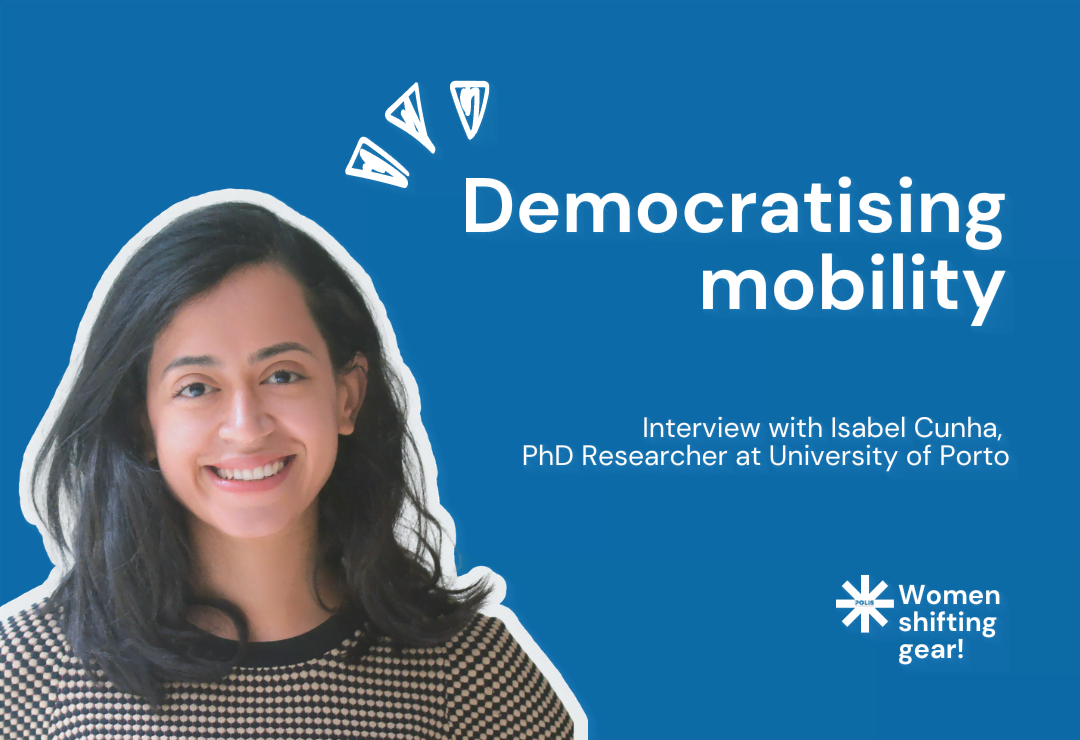Democratising mobility: Isabel Cunha discusses equitable cycling
How can cycling enhance social democracy? And what does an equitable approach to transportation indeed entail? To wrap up Women's Month 2023, POLIS sat down in conversation with Isabel Cunha, a sustainable mobility researcher committed to creating a shift toward equitable planning practices. Curious? Keep on reading!

Women cycling and enjoying their bikes - Credits: Matt Crawford
Traditional transport planning is, in many cities, still based on providing infrastructure and services for motorized modes, leaving active modes to the side and with that, the opportunities they can bring to foster urban equity and justice. Indeed, cycling can play a crucial role in bridging the gender gap and increasing the participation and inclusion of women in society, among other disadvantaged and non-visible groups.
To wrap up Women's Month 2023, POLIS sat down in conversation with the brilliant researcher Isabel Cunha to discuss all that and much more. The result? The compelling interview just below!
How did you get into the mobility field?
Isabel: I grew up in a city marked by the strong presence of the automobile, urban sprawl, and social and spatial segregation; this is the harsh reality of many cities worldwide, especially in the global south. In these contexts, the development of strategies to foster active and sustainable mobility is restricted due to various structural, political, social, and economic challenges. Working in the transportation sector has allowed me to research the potential of active mobility in reducing socio-spatial inequalities in cities, and advocate for more inclusive planning of cities and transport systems.
Why did you choose to research equity and cycle planning?
I: I decided to research the role of the bicycle as a low-carbon mobility option because I strongly believe cycling can democratize mobility and reduce transport inequality in cities. In my research scope, I have intersected the equity, accessibility, and cycling planning fields to examine to what extent Bicycle Master Plans have been equitable, considering the distribution of accessibility levels across disadvantaged and advantaged socioeconomic groups. Hence, my main goal was to fill this knowledge gap and develop a method of analysis and a planning support tool to assess cycling plans and transportation planning, ultimately supporting planners and decision-makers toward more equitable approaches.
Isabel Cunha is a Ph.D. candidate in Spatial Planning at the Faculdade de Engenharia da Universidade do Porto with several years of research experience on sustainable mobility at the Research Centre for Territory, Transports, and Environment CITTA. Her research aims to create an evidence base to promote a shift towards equitable planning practices, targeting planners, politicians, researchers, and practitioners engaged in sustainable mobility.
What are the key challenges for cities in planning equitable cycling?
I: There are numerous challenges. Policy and planning practitioners struggle to define, conceptualize and measure the equity impact because it represents a less tangible outcome; they often apply the concepts of “fairness”, “social justice”, and “equity” interchangeably. An equitable approach in transportation planning requires that people in disadvantaged conditions should be better provisioned in a way to improve their access to opportunities to ensure their inclusion and participation in society. Accordingly, to support planning practice, there is a need to develop metrics and tools to measure the equity impact of a project or investment allocation; equity is barely the main focus of transportation project assessments due to the lack of suitable data to conduct such analysis.
Where are cities succeeding and where are they failing?
I: All in all, cities are highly investing in infrastructure and bike programs to dramatically increase bicycle uptake in cities, reducing CO2 emissions and levels of motorization. Indeed, the strengths of the current cycling planning approaches refer to the general attempt to promote cycling as a feasible and safe transport mode for utilitarian trips through the measures like pop-up bike lanes and dedicated cycling infrastructure. Nevertheless, cities often tend to target central and tourist areas, overlooking the peripheral and deprived zones, and failing to address an equity-oriented distribution of bike investments. If there is political will and commitment, we could see more equitable strategies in place implemented in the short and long term.
What are the key policies that need to change to make cycling more equitable?
I: Attention should be drawn to the needs and barriers faced by vulnerable and disadvantaged groups of society. For this purpose, a political will to promote such an equity agenda is crucial since funding for active modes remains very limited. Developing educational and inclusion programs in deprived neighbourhoods is also helpful in communicating the benefits of cycling for both utilitarian and recreational trips. Finally, guaranteeing social participation in the decision-making process and understanding the motivation and barriers to cycling for these groups is equally important.

Isabel at the Fancy Women Bike Ride in Porto (Portugal)
Could you tell us more about the planning support tool for assessing the relative equity impact of bicycle planning (TIRE)?
I: I developed the tool TIRE during my PhD research; it was conceived to support planning practitioners in advancing equity-oriented strategies and fostering the equity impact of Bicycle Master Plans in cities. Its main output is a bivariate 2D Map composed of two aggregated indicators: a Bicycle Accessibility indicator and a Socioeconomic index. This tool maps zones in the city where a cycling plan has an equitable impact and zones to prioritise in future equity-oriented interventions. All in all, my goal is to create an evidence base to promote a shift towards equitable, diverse, and inclusive planning practices, targeting planners, politicians, researchers, and practitioners engaged in sustainable mobility.
How can mobility events further promote gender equity in the sector? Where are they succeeding, and where are they failing?
I: Mobility events are fundamental to strengthening women’s participation in the transportation sector. As a rapporteur at the Urban Mobility Days 2022, I wanted to empower their voices and perspectives in these events; these groups, among other vulnerable and disadvantaged representatives (i.e., the elderly), have specific needs and constraints in terms of mobility, which may hinder their access to activities and opportunities. Consequently, if their barriers are not directly addressed, they are at greater risk of social exclusion. The historically small representation of women in the transport sector produces gender-biased barriers, attitudes, and discriminating conditions in the work settings; it is time to set inclusive strategies to encourage the participation of women in transport planning and decision-making processes.
What is next for you and your research?

Young woman posing with her bike
I: This year, I am finishing my doctoral thesis. Currently, I am discussing with local planning practitioners, experts, and stakeholders the potential transferability of the tool TIRE to different geographic contexts and transport sectors, as well as conducting parallel research on gender differences in mobility patterns and preferences. After my PhD, I hope to continue advocating for more equitable and inclusive approaches in the transport sector. Recently I joined the EU Network for Diversity in Transport as an Ambassador, intending to bring to the spotlight the perspectives of disadvantaged and vulnerable groups; we must all continue to create awareness about their needs and limitations to promote fair and inclusive transportation systems!

 Isabel Cunha is a Ph.D. candidate in Spatial Planning at the
Isabel Cunha is a Ph.D. candidate in Spatial Planning at the